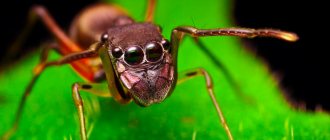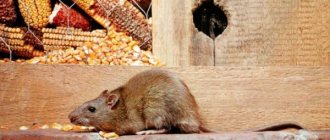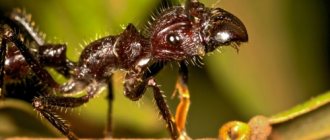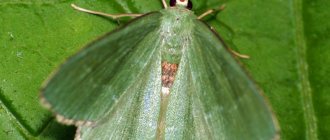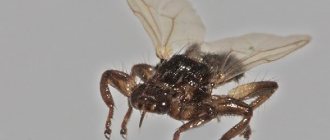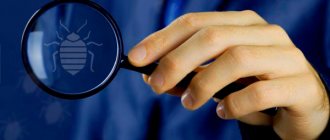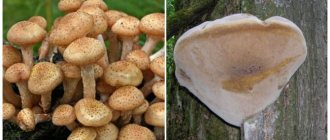What it is?
Woodlice is classified as a subtype of crustaceans due to the fact that their body is covered with a shell (read more about what type, class and order the woodlice belongs to in this article). The average length of one individual is 1 cm (what do woodlice look like?). Arthropods are active at night, as they cannot tolerate bright light and noise. During the day, it is quite difficult to notice woodlice in an apartment (if the number of individuals is small).
Reference. The movements of woodlice are fast, and individuals are dexterous. If there is a threat to life, they curl up into balls. Life expectancy is 10-12 months.
Common habitats are under the bathtub, behind the toilet, near the boiler, in closets with supplies of vegetables (we talked more about where they come from and where woodlice live and what are the reasons for their appearance in the apartment in a separate article). This is explained by increased humidity and the presence of the necessary microflora for nutrition. Of particular danger to an apartment are wood lice that have entered the premises without permission through the ventilation system from the basement, roof or street. Such individuals actively reproduce and are difficult to fight.
The life of woodlice - it's useful to know
Types of woodlice can be divided into running, crawling, clinging, and curling forms. To understand behavior and lifestyle, you need to figure out what class the woodlice belongs to. This is one of the rare species of crustaceans measuring 10-18 mm, which in the process of its evolution managed to adapt to life on land. In the classification they are listed as an order of isopods, a family of crustaceans. Therefore, it is a mistake to say that woodlice is an insect.
The habitat of isopods is mainly sea coasts and freshwater bodies of water, although many members of the family have long adapted to life on land. There are about 250 species of such arthropods. This explains what woodlice looks like.
Distinctive features
- Although she is “related” to cancer, she does not have such huge claws.
- The upper jaws have no tentacles at all.
- On the sides of the small head are visible large eyes and two pairs of antennae.
- Seven pairs of limbs run equally fast.
- Protection from external enemies and natural factors is provided by fairly dense flat chitinous shields. There are seven of them. Thanks to them, woodlice have adapted to live in crevices, under stones and tree bark.
- The body is slightly convex, segmented. Each section (segment) is equipped with a pair of legs.
- On the abdomen in the rear part, 6 articulated segments are clearly visible. Here, on the abdomen, there are gills - the respiratory organs of land crustaceans.
The chitinous shell protects arthropods from many enemies
Interesting. The panels are placed one on top of another type of tiled roof. Thanks to the flexible body, in case of danger, these plates fold up, forming a lump protected on all sides, inside of which there are paws, a tender abdomen, and a head.
Habitats
It is found in all landscape areas. Adaptability to a particular area of residence explains the difference in body colors. It varies from gray, steel, to light and dark shades of brown. Lifestyle is nocturnal. The rest of the time, the woodlice hides from light, dry air in dark and damp places. Crayfish live for about two years. Their largest populations are observed in the steppes. There, the land crayfish feeds at night on plants or their decaying remains. In them he also draws the moisture necessary for breathing.
What does it feed on
In the limited volumes of an apartment there is not such a variety of “pickle pickles” as in open nature. However, for an unpretentious crustacean, a person’s home has what woodlice eat:
- leftover food in the trash can;
- dust and mucus in the corners of the bathroom and toilet;
- young shoots and leaves of ornamental plants in flower pots.
It is low-calorie plant food, its dying and rotting parts that form the basis of the diet. It is easy to process and assimilate even the coarsest shoots; the roots are helped by special bacteria in the esophagus of crustaceans.
What's the harm?
Are wood lice dangerous for people in an apartment and why? Woodlice have earned a bad reputation because of their unpleasant appearance and their tendency to gather in colonies. For many, just looking at such a creature creates a persistent feeling of disgust, and constant contact (if woodlice appear as soon as you turn on the light) can provoke stress or a nervous breakdown.
Despite their terrifying appearance, these representatives of crustaceans are practically safe for humans. They do not bite, do not spoil food, do not contaminate water, do not buzz and do not penetrate the body. But individuals feed not only on living plants, but also on rotten plants.
There remains a threat that woodlice on their paws can carry pathogens of infectious diseases (fungal spores, lichen, bacteria). But this issue remains controversial, since there is no scientific evidence or confirmation.
Woodlice live in the bathroom, toilet, basement or kitchen. If these individuals appear in the premises, you need to pay attention to the condition of the sewage system and water supply. These systems may develop leaks or malfunctions that are invisible to the human eye. If the problem is not solved, the woodlice colony will increase.
For plants
For indoor plants, these crustaceans pose the greatest danger. The harm is as follows:
- eating live leaves;
- damage and violation of root integrity;
- soil compaction (oxygen loss occurs).
On a note. A sign that a bush is being attacked by woodlice is small holes in the leaves and flowers. For individuals, 14-15 days are enough for the home flower to completely wither and die.
Cylisticus convexus
The woodlouse Cylisticus convexus is known for having managed to spread throughout the world in a relatively short period of time, but it cannot be called a typical inhabitant of urban buildings: Cylisticus convexus is almost never found in apartments. Individuals of this species prefer to settle on agricultural lands and in various buildings such as cowsheds, silos and currents.
This type of woodlice is well identified by its noticeable and fairly long cerci - protrusions at the end of the abdomen, similar to antennae:
Is it worth fighting them?
Woodlice do not cause much harm, but there is no need to “breed” them in the apartment. Pest extermination is an important and necessary procedure. These representatives of crustaceans do not bite people or animals , but they disturb the comfort in the apartment. The appearance of woodlice is a signal for urgent sanitary treatment of the premises (where do woodlice come from?). This will allow for timely destruction of individuals and reduce the risk of possible spread of fungi or lichen.
It is necessary to distinguish woodlice from silverfish. The latter prefer dryness, eat sugar and leftover food. Silverfish have smaller shells and longer legs. These individuals belong to insects. The effectiveness of combating it depends on the exact identification of the type of pest (what types of woodlice are there and how to deal with them?).
When is urgent woodlice extermination required?
- The number of individuals does not decrease, but increases.
- The owner of the apartment sees woodlice even during the day.
- Individuals appear outside the boundaries of possible or usual location (outside the bathroom).
Trachelipus rathkei
This type of woodlice does not even have a generally recognized Russian-language name, but at the same time it is also quite common in many cities in central Russia.
According to scientific research, the abundance of representatives of this species is explained by the fact that they are distinguished by their excellent ability to adapt to environmental conditions. In addition, as it turned out, representatives of Trachelipus rathkei choose to live precisely those areas of cities where the development is most dense.
These crustaceans are distinguished by a characteristic shell that is slightly flattened and greatly expanded at the bottom, which makes them difficult to catch with your fingers. In addition, the antennae of Trachelipus rathkei are quite long - so much so that they can be used to distinguish even young individuals from related species.
Trachelipus rathkei is distributed throughout the world, and in the same large quantities as in Russia, it is found in Europe, the USA, and Canada.
Scientists are very attracted to the strong variability in sex ratios in different populations of these woodlice. In some cities, the population is dominated by males, in others by females, but experts still cannot find out the reasons for such fluctuations.
In the photo below you can see what an adult specimen of Trachelipus rathkei looks like:
"Domestic" species of woodlice in other countries
In Europe and Mediterranean countries, the list of typical “domestic” woodlice looks somewhat different than for Russia:
- The first place in prevalence is occupied by the common woodlouse (armadillo), which is also characteristic of Russian residential premises, as well as various outbuildings.
- But the second place is occupied by the famous desert woodlouse of Reaumur, which is considered, so to speak, the most terrestrial crustacean in the world, adapted to living in semi-deserts and deserts. This species is especially common in Lebanon, Israel, Egypt and Turkey - here it is found even in larger quantities than the rough woodlouse is found in the south of Russia.
In tropical countries, a significantly larger number of woodlice species live in apartments, but they are not much different from their relatives characteristic of central Russia. Even their size is not impressive - the largest representatives reach a length of about 3-4 cm, and only individual giants grow up to 5-6 cm.
Is the use of boric acid effective against woodlice?
To be honest, not too much. The product consists of grains that crustaceans do not eat. If you spray a substance dissolved in water in places where pests accumulate, its concentration will be too low. Boric acid must enter the body of the wood lice through food, so external spraying will not affect the crustaceans. There will be some benefit from the drug, but no more than from regular salt.
Crowds of woodlice that have settled in the house and in the garden beds can greatly spoil the mood. You shouldn't expect any serious harm from them.
And it’s not difficult to get rid of crustaceans. You may not even need chemicals, you just need to eliminate excess moisture in the room and area.
We recommend watching a video about woodlice in a greenhouse:
Contact control: steam and heat treatment
If woodlice have been localized in the premises of a house or apartment, it is worth trying tactics to destroy them that allow you to quickly destroy the entire population. If for some reason chemical insecticides cannot be used to kill crustaceans, you can resort to steam or heat treatment. Here, housewives very successfully use the most ordinary steam generators or powerful hair dryers. The main thing is that the temperature of the directed flow of steam or hot air reaches 70 degrees Celsius. But the hot fog generators available in the arsenal of exterminators work much better. They combine the effectiveness of insecticidal and thermal treatment. You can always call the specialists of the Sanepidemstation.com service by calling the phone number listed on the website.
We recommend:
- Disinfection against bedbugs with a guarantee
- How to get rid of mice in a private house
- Silverfish in the bathroom and apartment: how to get rid of it
- Clearing a clogged toilet
- Fighting ants in the garden and summer cottage
- Destruction of bark beetles with a guarantee
What a woodlouse looks like - photo
From the photo of the woodlice it is clear why it is classified as a crustacean. The insect's body is covered with plates that form a carapace. Each segment-plate has a pair of legs; the woodlice has 7 such pairs in total; all legs have the same structure. The length of the woodlice is about 1 cm.
Body color can vary: from gray-brown to steel gray. The shell of some species is not monochromatic, but with patterns reminiscent of hieroglyphs (seen in the photo of woodlice). The woodlouse has two pairs of antennae: one is poorly developed and small in size, the other is well developed. The eyes are located on the sides of the insect's head.
If a woodlouse senses danger, it curls up into a ball to appear dead.
Woodlice reproduction is unusual. Before fertilization, females have two genital openings on the sides of the fifth segment, which lead to the spermatic receptacles. During fertilization, the seed enters the receptacles, which then burst and the seed enters the oviduct. After this, the woodlice molts, the genital openings close, and a slit-like opening appears between the fifth and sixth segments.
At the base of the first five pairs of legs, plates appear, which together form the brood chamber. Fertilized eggs, through a hole that appears between the fifth and sixth segments, enter the chamber in which they develop further.
The eggs eventually turn into woodlice larvae, which continue to grow in the brood chamber for some time. Development inside the chamber lasts from 40 to 50 days. The larvae have only 6 pairs of legs; before the woodlice appear as adults, the larva molts at least 10 times. It takes about 3 months.
Part of the seed is not involved in the fertilization process; it remains inside the female and fertilizes new eggs, which are formed after the previous generation leaves the brood chamber.
Varieties
Woodlice do not carry infections and do not bite. They can be beneficial when they burrow into the soil of flower pots and eat rotted remains, providing oxygen to the roots and improving soil quality. In temperate climates, several species of woodlice can exist.
Armadillidium vulgare
It is one of the most common types.
Armadillos, despite their small size, play an important role in the decomposition and utilization of cellulose, and also process waste from other species into fertilizers. Their usual habitat is leaves, rotted shrubs, and rhizomes.
Armadillos are sometimes called rolls. This is due to their ability to curl into small balls, with the outer cuticle forming a kind of armor on the outside, protecting their soft insides in times of danger, much like hedgehogs do.
Porcellio scaber
It is the other most common species, which is often called quite officially - woodlice. This is a smaller representative of a large family of woodlice, relative to the previous species. Porcella does not have the ability to curl.
Woodlice's hard outer shell, or exoskeleton, is constantly renewed.
The process occurs in two stages. First, the back half of the shell falls off, and then, after two or three days, the front part changes. Nature has provided such an algorithm so that the creature does not remain without protection for a long time.
Common armadillo
The length of the body reaches 15 mm. An adult invertebrate, dark in color with an elongated body and clearly separated sections. Antennae and paws (19 pairs) are visible from under the armor.
The crustacean is active at night and prefers to rest during the day. It feeds mainly on plant foods. In dangerous situations, it curls into a ball.
Centipede
An insect that is also not harmful to humans. It feeds on insects, flies, and pests. Doesn't attack people.
If the poison gets on the skin, it can cause allergies (most often redness, less often scabies).
Silverfish
The silverfish is a small insect with an elongated body and a large number of legs, which provide it with fast movement speed.
Feeds on small insects
, including ticks that harm humans.
Double-tailed
Another name is earwigs, which belong to the class of insects. They live in dark, damp areas. They get into living quarters by accident. If you don’t disturb the two-tailed bird, it will go away on its own. Upon contact with a person, it can sting. The poison is not fatal or dangerous, it only causes a slight burning sensation.
Marine
Individuals reach 20 mm in length, have a wide shell, powerful, hard legs. Mostly found in water, they can live in clogged drains, clogged water filters or water glasses. Completely harmless to people
, feed exclusively on waste and garbage, including inorganic.
IMPORTANT!
If you live close to the sea, then the appearance of woodlice is most likely random and does not indicate high humidity in the house.

